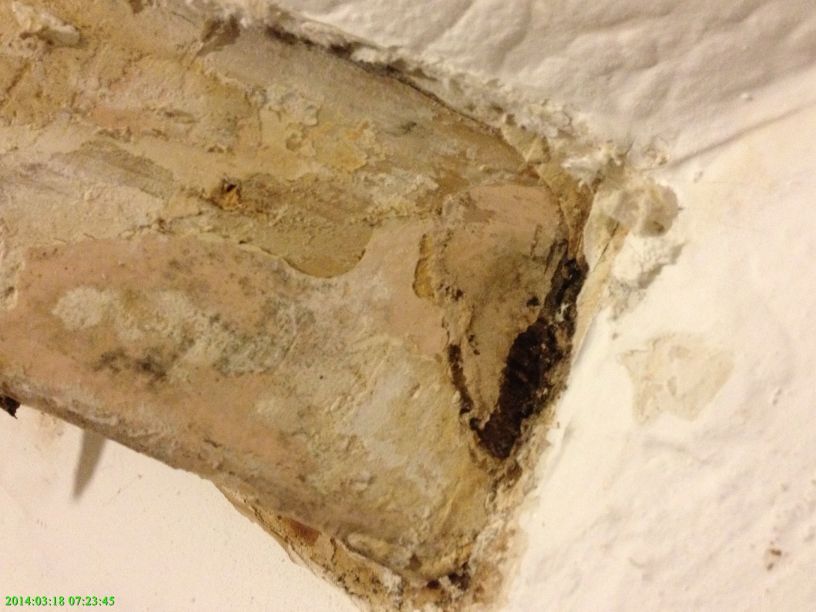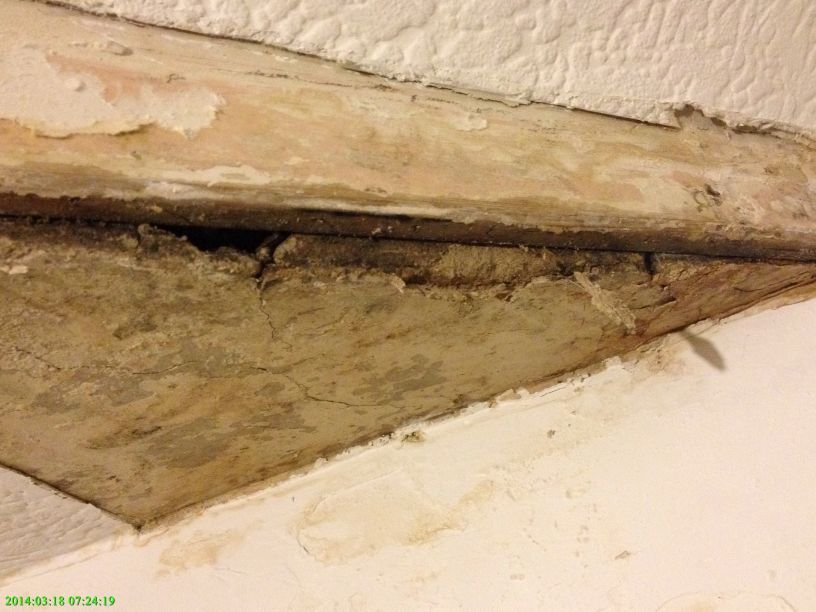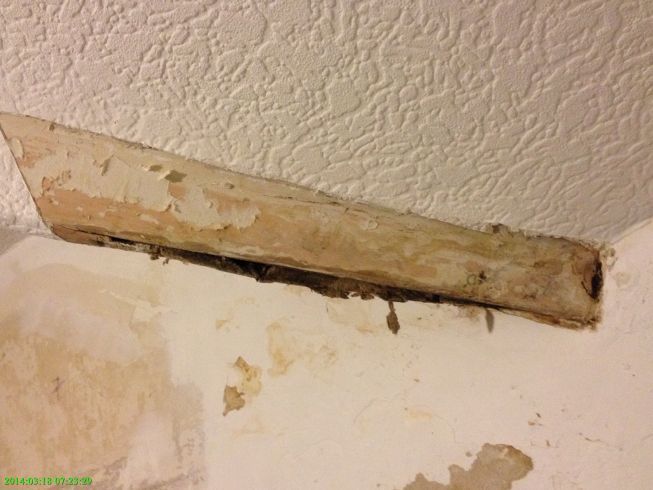I agree with you & when the roofer i've been put on to comes in to work i'll be asking him to inspect.
Got brave tonight & peeled off the ceiling paper as there was some brown growth on the wall where the wall meets paper - like mushroom like, but really small. Like a brown ball kinda thing. I thought, that paper just needs to come off. No good burying the head in the sand...

It's certainly had plaster on it. I'd guess the original 1930s plaster.
There'd wood in there that's for sure. The right hand side is wood. Where it meets the wall is a bit dark...

But it FEELS quite solid. I've given it a push & pull & knock & it's not soft.
Don't get me wrong though, there are most certainly soft parts. Totally wrecked parts...

Where you see cracks - well, i know there's plaster there but i don't know what the whole thing is made of. It can't be plasterboard if original. I don't know if it's some sort of wooden sheet or just quite thick plaster that's gone soft or what. It's gone all brown.
I could quite easily pull that out.
I thought it was 1 wooden beam that ran into the wall, a solid beam, but it turns out it's not. There's nothing behind that flat cracked piece.

So what i'm
hoping is that it's like the wall was when we got the house - suffocated. We took the wallpaper off the wall & the surface at least dried out.
We've had some serious rain down since we stripped it & not once did it go darker. This makes me believe the first roofer we had - it's a problem that's been fixed. At least on the roof side.
So i'm hoping by taking the ceiling paper off, it's going to allow that bit of wood to dry out. The cracked plaster part though, there's no rescuing that. That's gone.
Not being very (for any, read: at all) DIY minded, i'm not sure what the solution is here. I guess perhaps patch in a small plasterboard or some sort of wood sheet & plaster over. I don't know. I hope the wooden piece that runs into the wall is still good.
Then there's the wall below. As i suspect the plaster is what you'd call 'soft' i wonder how long it'd take to dry out fully.
Oh & when we spoke to our neighbour, they said that approx. 6 months prior to us buying, the previous owner asked them if they had a leak on the other side of the wall. They then apparently re-decorated.
So my guess is it'd been leaking for [some time] which 6 months before we bought, they fixed, but didn't give chance to dry out.





